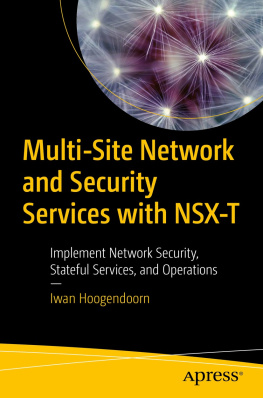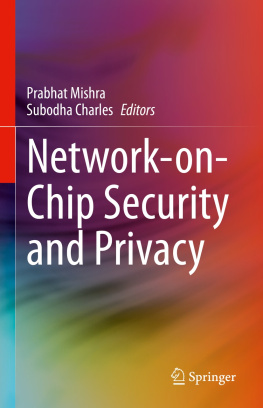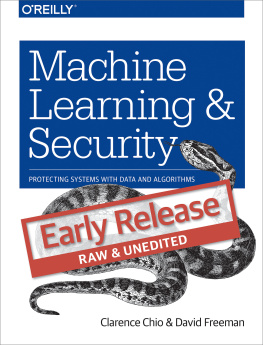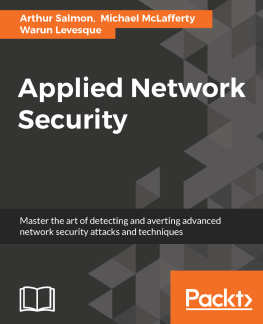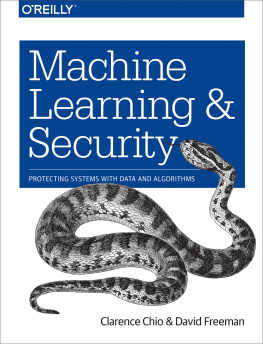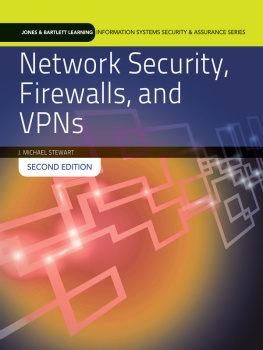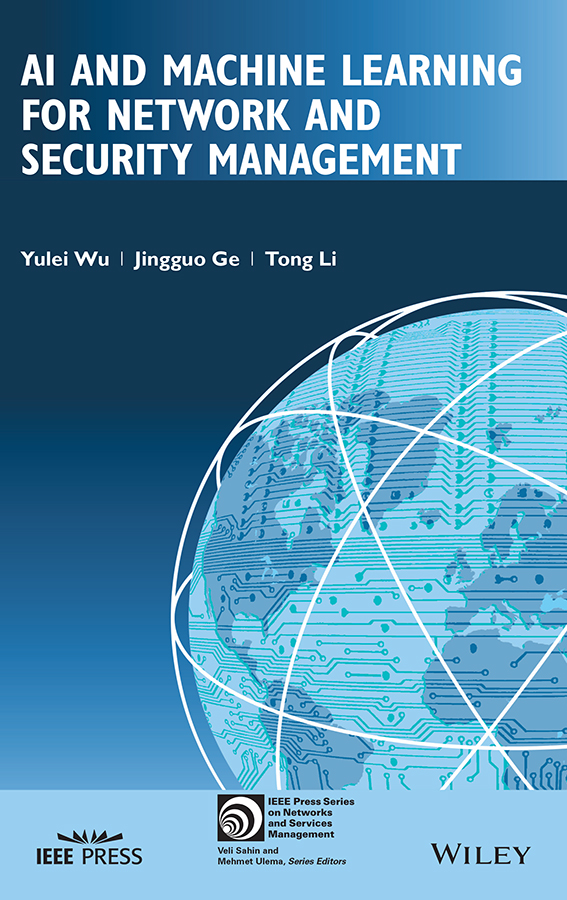
Table of Contents
List of Tables
- Chapter 2
- Chapter 5
- Chapter 6
- Chapter 7
- Chapter 8
- Chapter 10
List of Illustrations
- Chapter 1
- Chapter 2
- Chapter 3
- Chapter 4
- Chapter 5
- Chapter 6
- Chapter 7
- Chapter 8
- Chapter 9
- Chapter 10
Guide
Pages
IEEE Press
445 Hoes Lane
Piscataway, NJ 08854 |
IEEE Press Editorial Board
Sarah Spurgeon, Editor in Chief |
| Jn Atli Benediktsson | Andreas Molisch | Diomidis Spinellis |
| Anjan Bose | Saeid Nahavandi | Ahmet Murat Tekalp |
| Adam Drobot | Jeffrey Reed |
| Peter (Yong) Lia | Thomas Robertazzi |
AI and Machine Learning for Network and Security Management
Yulei Wu
University of Exeter
UK
Jingguo Ge
IIE Chinese Academy of Sciences
China
Tong Li
IIE Chinese Academy of Sciences
China
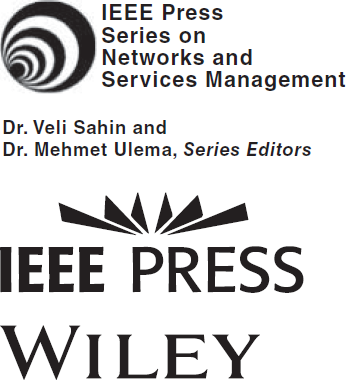
Copyright 2023 by The Institute of Electrical and Electronics Engineers, Inc. All rights reserved.
Published by John Wiley & Sons, Inc., Hoboken, New Jersey.
Published simultaneously in Canada.
No part of this publication may be reproduced, stored in a retrieval system, or transmitted in any form or by any means, electronic, mechanical, photocopying, recording, scanning, or otherwise, except as permitted under Section 107 or 108 of the 1976 United States Copyright Act, without either the prior written permission of the Publisher, or authorization through payment of the appropriate percopy fee to the Copyright Clearance Center, Inc., 222 Rosewood Drive, Danvers, MA 01923, (978) 7508400, fax (978) 7504470, or on the web at www.copyright.com. Requests to the Publisher for permission should be addressed to the Permissions Department, John Wiley & Sons, Inc., 111 River Street, Hoboken, NJ 07030, (201) 7486011, fax (201) 7486008, or online at http://www.wiley.com/go/permission.
Limit of Liability/Disclaimer of Warranty: While the publisher and author have used their best efforts in preparing this book, they make no representations or warranties with respect to the accuracy or completeness of the contents of this book and specifically disclaim any implied warranties of merchantability or fitness for a particular purpose. No warranty may be created or extended by sales representatives or written sales materials. The advice and strategies contained herein may not be suitable for your situation. You should consult with a professional where appropriate. Neither the publisher nor author shall be liable for any loss of profit or any other commercial damages, including but not limited to special, incidental, consequential, or other damages. Further, readers should be aware that websites listed in this work may have changed or disappeared between when this work was written and when it is read. Neither the publisher nor authors shall be liable for any loss of profit or any other commercial damages, including but not limited to special, incidental, consequential, or other damages.
For general information on our other products and services or for technical support, please contact our Customer Care Department within the United States at (800) 7622974, outside the United States at (317) 5723993 or fax (317) 5724002.
Wiley also publishes its books in a variety of electronic formats. Some content that appears in print may not be available in electronic formats. For more information about Wiley products, visit our web site at www.wiley.com.
Library of Congress CataloginginPublication Data applied for:
Hardback ISBN: 9781119835875
Cover Design: Wiley
Cover Image: Bill Donnelley
Author Biographies
Yulei Wu, is a Senior Lecturer with the Department of Computer Science, Faculty of Environment, Science and Economy, University of Exeter, UK. His research focuses on networking, Internet of Things, edge intelligence, information security, and ethical AI. He serves as an Associate Editor for IEEE Transactions on Network and Service Management, and IEEE Transactions on Network Science and Engineering, as well as an Editorial Board Member of Computer Networks, Future Generation Computer Systems, and Nature Scientific Reports at Nature Portfolio. He is a Senior Member of the IEEE and the ACM, and a Fellow of the HEA (Higher Education Academy).
Jingguo Ge, is currently a Professor of the Institute of Information Engineering, Chinese Academy of Sciences (CAS), and also a Professor of School of Cyber Security, University of Chinese Academy of Sciences. His research focuses on Future Network Architecture, 5G/6G, Softwaredefined networking (SDN), Cloud Native networking, Zero Trust Architecture. He has published more than 60 research papers and is the holder of 28 patents. He participated in the formulation of 3 ITU standards on IMT2020.
Tong Li, is currently a Senior Engineer of Institute of Information Engineering at the Chinese Academy of Sciences (CAS). His research and engineering focus on Computer Networks, Cloud Computing, SoftwareDefined Networking (SDN), and Distributed Network and Security Management. He participated 2 ITU standards on IMT2020 and developed many largescale software systems on SDN, network management and orchestration.
Preface
With the fast development of networking technologies, the communication network has gone through four generations and is in the process of deploying the fifthgeneration system (5G) worldwide. 5G has its unique feature of accommodating diversified services on top of a shared infrastructure. These services not only include the telecommunication service that we use every day for our daily lives, but also encompass a wide variety of services in support of many important vertical industries including energy, health, water, manufacturing, environment, to name a few. These services are mainly classified into three broad categories: enhanced Mobile Broadband ( eMBB ), Ultra Reliable Low Latency Communications ( URLLC ), and massive Machine Type Communications ( mMTC ). The deployment of 5G to support eMBB services has already started in the globe, and that of supporting URLLC and mMTC will start in the foreseeable future. Meanwhile, research of nextgeneration communication systems, i.e. beyond 5G ( B5G ) or 6G, has already started with many research centers and groups established globally.
To meet requirements of diverse services running on top of 5G/B5G/6G infrastructure, many networking and computing techniques have been incorporated into the communication system, including reconfigurable intelligent surface, Millimeterwave/THz links, highcapacity backhaul connectivity, cloud nativeness, machinetype communications, edge intelligence, blockchain, and quantum computing. This immediately results in the increasing complexity of modern networking and communication systems which will be at a scale and scope we have never seen before. This also remarkably raises the bar for network and service management. Since network security is an integral part of network management, the broad understanding of network management shall cover both network management and security management. The closedform models created for individual protocols, applications, and systems have been successful for network and security management in the past 20 years. However, the networking systems of today are too complicated for closedform analysis.
Next page

